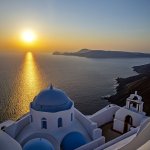I've always been fascinated by the natural wonders of the world, and recently I have become particularly interested in the volcanic landscape of Santorini. I understand that the island's dramatic cliffs, unique beaches, and overall topography are heavily influenced by its explosive volcanic past.
However, I'm looking to go beyond just the surface and truly understand the evidence of Santorini's volcanic activity. Could any geology enthusiasts, historians, or locals provide more detailed insights into:
However, I'm looking to go beyond just the surface and truly understand the evidence of Santorini's volcanic activity. Could any geology enthusiasts, historians, or locals provide more detailed insights into:
- Specific Landforms: What are the most apparent geological features on the island that indicate its volcanic nature?
- Volcanic Materials: Are there any areas where you can see different layers of ash or pumice stone resulting from various eruptions over time



